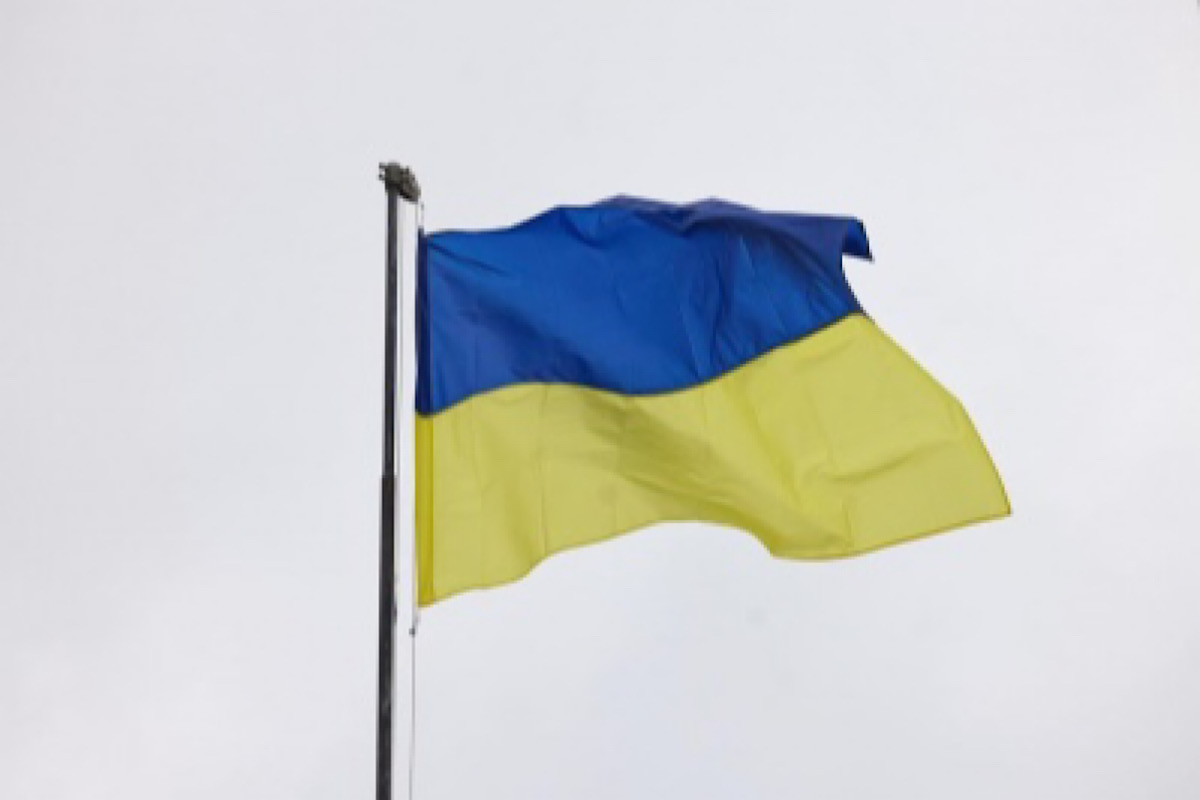Ukraine Cornered
The Trump Administration’s latest demand ~ that Ukraine grant the US access to its critical minerals in exchange for aid ~ marks a dramatic shift in Washington’s approach to the war.
As the war in Ukraine grinds into its third year, the shifting dynamics of international politics and battlefield realities could make 2025 a pivotal year.

Ukraine Flag (photo: IANS)
As the war in Ukraine grinds into its third year, the shifting dynamics of international politics and battlefield realities could make 2025 a pivotal year. The conflict, devastating in its human and economic toll, appears far from resolution. Yet, the interplay of global power shifts, diplomatic strategies, and military outcomes suggests pathways ~ albeit fraught with complexities ~ that could bring the war to a close. On the ground, Ukraine faces significant challenges. Despite commendable asymmetric tactics, its forces are losing ground to Russia’s relentless advances.
Russia, in turn, grapples with staggering losses and the mounting strain of prolonged warfare on its economy. While sanctions and battlefield casualties have not decisively crippled Moscow, cracks in its wartime resilience are becoming more apparent. Interest rates have soared, the ruble has weakened, and economic growth is expected to slow dramatically. These pressures could eventually nudge Russia toward negotiations. However, any resolution will require more than a military stalemate. Ukraine’s leadership has emphasised the need for security guarantees that extend beyond past assurances, which failed to deter Russian aggression. Proposals for Nato membership or other binding security frameworks remain contentious. Key international players are divided, with some reluctant to extend full military backing. Without such guarantees, any ceasefire risks being temporary, leaving Ukraine vulnerable to future aggression.
Advertisement
Amid the uncertainty, the role of international mediation remains critical, ensuring that peace efforts balance justice for Ukraine and sustainable security guarantees for the region. A potential game-changer is the shift in US leadership. The incoming Trump administration may alter the trajectory of the war, though its intentions remain unclear. A transactional approach to diplomacy, coupled with a critical reassessment of US aid to Ukraine, could lead to a redefined engagement strategy. While this raises concerns about reduced support, it also opens the door to potential peace negotiations. Ukraine’s leaders, aware of these shifting tides, have proactively positioned themselves as partners in shaping a future European security framework, emphasising the strategic and economic value they bring to global allies.
Advertisement
The broader international community faces a delicate balancing act. While the urgency of bolstering Ukraine’s defences remains, the long-term resolution depends on aligning military deterrence with diplomatic solutions. Proposals such as peacekeeper deployments or alternative collective defence mechanisms have been floated but require the backing of major powers to be credible. Ultimately, the endgame in Ukraine hinges on two critical factors: the alignment of international diplomatic will and the ability of Ukraine’s allies to translate battlefield realities into sustainable peace.
This war has underscored the fragility of global security frameworks and the high stakes of unchecked aggression. A resolution, when it comes, must not only safeguard Ukraine’s sovereignty but also reinforce the principles of international law and collective security. The coming year will test the resilience and resolve of Ukraine, its allies, and the broader international community. The cost of failure, however, is a lesson the world cannot afford to relearn.
Advertisement